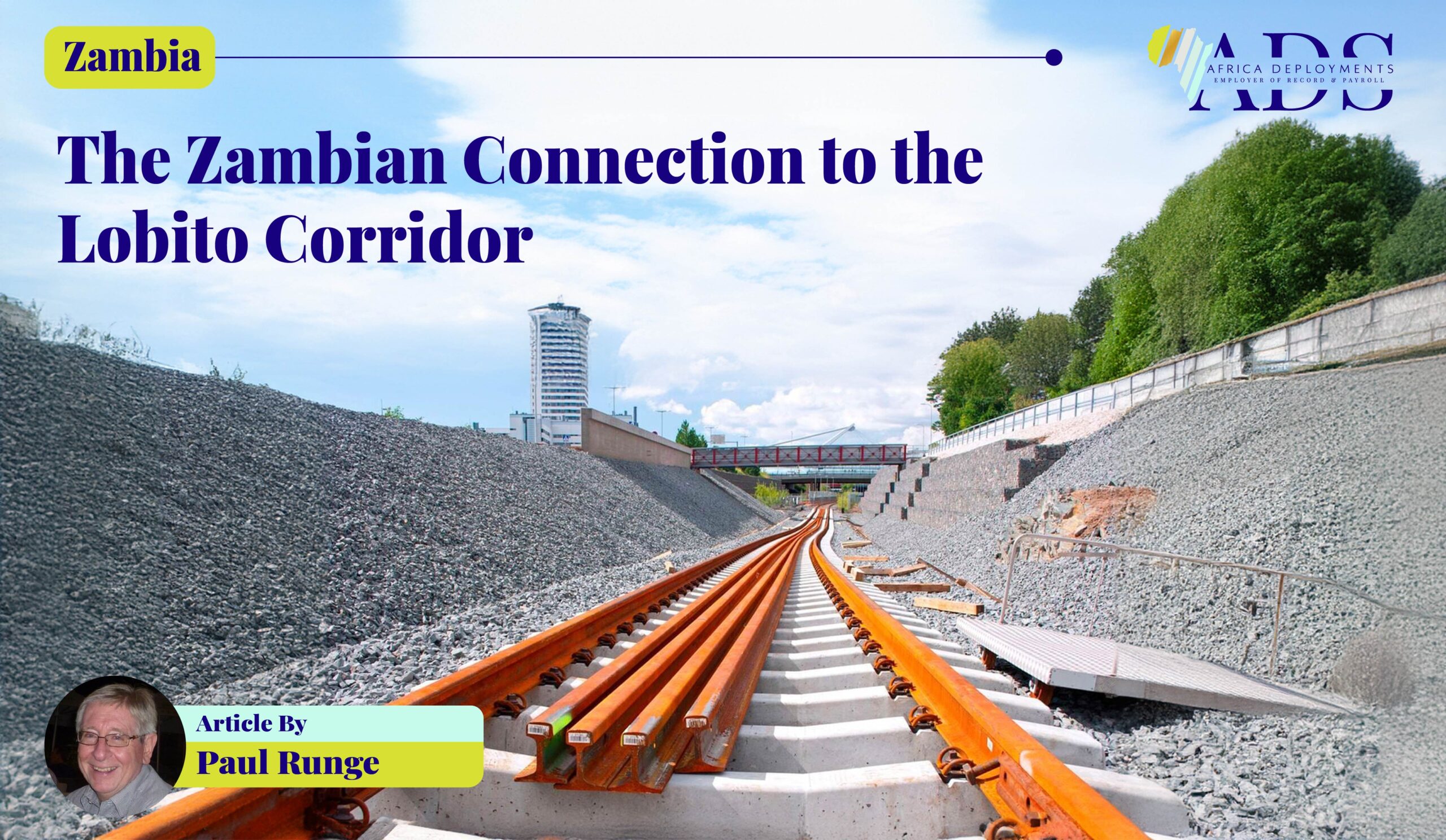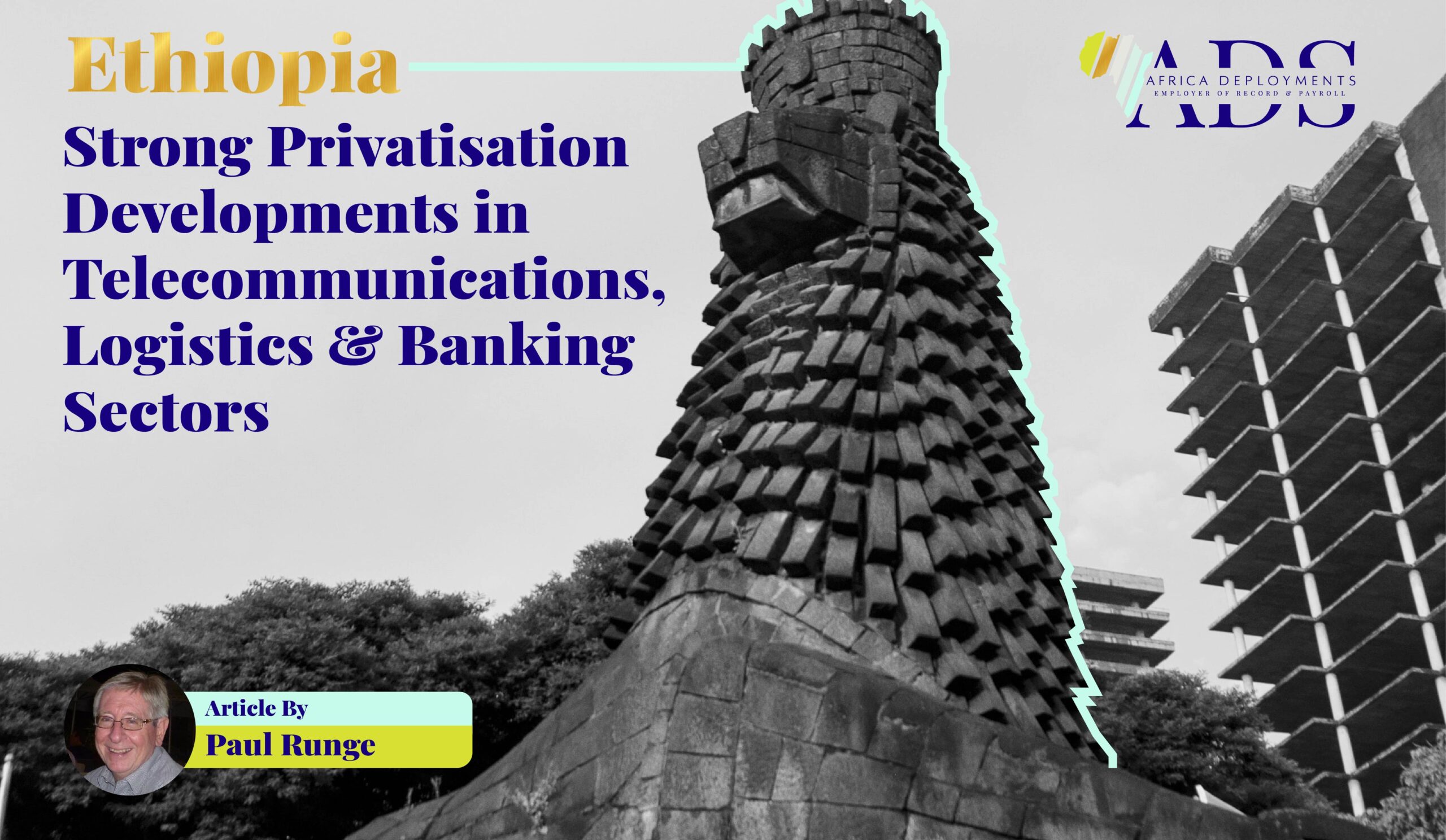
The Zambian Connection to the Lobito Corridor
How Can Zambia Benefit from This Logistics Game-Changer?
A major regional transport logistics development…
In January 2023, the ministers of transport of Angola, the DR Congo and Zambia signed the Lobito Corridor Transport Facilitation agreement in Lobito, Angola. The objective was to provide an effective and efficient route facilitating the transport of goods within territories between the three corridor member states. This accord was followed by a number of follow-up agreements. A particularly important event was the 31 December 2023 announcement by Ivanhoe Mines (the operator of the Kamoa-Kakula copper and cobalt mine in the DR Congo), that the first consignment of copper concentrate had arrived at Lobito Port. The initial delivery of 1 100 tons was part of a 10 000-ton trial shipment using the Lobito Corridor.

Description of the Lobito Corridor…
The Lobito road and rail corridor extends some 1 300 kilometres inland from the Angolan port city of Lobito on the Atlantic Ocean, to the border of the DR Congo, and in close proximity to north-western Zambia. Its main feature is a railway constructed in the early 20th century by the Portuguese and Belgian colonial powers. This line can be extended a further 400 kilometres into the DR Congo, to Kolwezi which is situated in the heartland of the DR Congo Copperbelt. The Angolan authorities have concessioned the railway for 30 years to the Lobito Atlantic Railway Consortium. The consortium comprises the international commodity trader, Trafigura, the construction group, Mota-Engil, and the rail operator, Vecturis.
The Lobito Corridor initiative is strongly supported by the Southern African Development Community (SADC). SADC envisages linking the Lobito Corridor to the Tanzania Zambia Railway Authority (TAZARA) line, which traverses Zambia and Tanzania and ends at the Tanzanian port of Dar es Salaam. This would create a cross-regional trade and transport route from the Atlantic to the Indian Oceans.

The logistics advantages of the Lobito Corridor…
The aforementioned copper shipment by Ivanhoe took only eight days. This compares with an average of 25 days to arrive at the port of Durban, South Africa, which is the main eastwards route historically used by the mining houses in the Zambian and DR Congo copperbelts. Trucking mining produce to Dar es Salaam takes about 35 hours. Lobito thus provides the quickest and logically least costly route-to-port. As another advantage, the western route to Lobito has only one border crossing (from the DR Congo into Angola). The Durban alternative requires crossing three international boundaries, incurring increased costs and delays. A potentially lucrative new regional trade route which will directly benefit Angola, the DR Congo and Zambia, and indirectly enhance the economy of much of the region, is at last receiving substantial attention.
According to some analysts, Lobito is on the wrong side of the continent; they emphasise the strong demand for critical battery value chain minerals by Asian markets in the east. However, Lobito on the Atlantic Ocean is well located for supplying strategic minerals to Europe and the west.
Back-haul supplies of equipment and other mining maintenance requirements will be supplied more rapidly and effectively via use of the Lobito Corridor.

Logistics issues pertaining to the evacuation of Zambia’s minerals…
My colleagues and I spent much time between 2008 and 2014, visiting the copperbelts of Zambia and the DR Congo. A special focus was on Zambia’s ‘New Copperbelt’ in the north-west. This mining area was developing fast, with Canadian miners First Quantum Minerals and Barrick Gold developing the Kansanshi, Sentinel, Lumwana and other copper mines.
There was much talk then of the most effective means of transporting the copper and cobalt produced by the mines. There was a need to improve the road connecting the ‘New’ Copperbelt to the historic ‘old’ Zambian Copperbelt of the Ndola, Kitwe and Chingola areas which lie further east. There was the question of why Solwezi did not have an effective transport link with Kolwezi in the DR Congo Copperbelt? But the big conversation topic was linkage of the ‘New Copperbelt ‘ and all Zambia’s mining areas to the Lobito rail line, to create a new (far less costly) export route. The Lobito connection was championed by the former Zambian vice-president, Enoch Kavindele. His Northwest Rail Company Limited was partnering in the venture with the South African transport logistics company, Grindrod.

An exceptional event, including a strong declaration of Zambian intent and international financial support…
In February 2024, the Lobito Corridor Private Investor Forum was held in Lusaka. This major event was hosted by Zambia with support from Angola and the DR Congo, and convened by the United States and the European Union. Participants included senior representatives of prominent international investment and development finance agencies, including the Africa Finance Corporation, the US International Development Finance Corporation (DFC), and the African Development Bank. Over 400 government and business leaders attended, and there were numerous expressions of support and optimism for the Lobito solution. These were followed by substantial pledges of economic support from funding agencies for the development of the corridor.
In his keynote address at the Forum, the Zambian president, Hakainde Hichilema, described the Lobito initiative as “a big thing for us”. He expressed his full support for linking his country’s copper mining areas to the corridor, and called on the international investment community to contribute to its realisation.

What must be done to link Zambia’s north-west to the Lobito rail line?
The Northwest Rail Company initially laid out the plans for the linkage of Zambia’s Copperbelts to the Lobito line. The new rail line would extend from Solwezi to the Jimbe area on the border with Angola passing through the area of Barrick’s Lumwana mine. The cost of the 380-kilometre line was estimated at around US$ 500 million. Kavindele also announced plans for a Chingola-Kalumbila-Solwezi link to the ‘old’ copperbelt, and a northern rail spur from Solwezi to Kolwezi in the DR Congo.
The substantial pledges of financial support for the Zambia linkage should be followed relatively soon by new rail construction. The leading private sector role player, the Africa Finance Corporation, has indicated that ground could be broken in 2026, and that there could be an operational railway between north-western Zambia and eastern Angola as soon as 2028.

But some questions and challenges…
Analysts are pointing to a number of possible challenges to the full realisation of the Lobito Transport Corridor.
Funding has to be secured for the Zambia linkage, and the approximately 400-kilometre section in the DR Congo still has to be realised. The Congolese rail utility, Société Nationale des Chemins de Fer du Congo will in particular, require considerable financial and technical assistance support. The Lobito line should carry sufficient cargo in both directions and a satisfactory level of cargo backhaul has to be achieved. The return cargo will not only be for equipment supplies to the mines but also for agricultural produce. The Forum referenced the development of agricultural industries along the route. For example, the DFC of the USA announced funding for the expansion of the operations of Seba Foods Zambia Limited.
A major subject of current debate is the strong presence of China in the three countries involved. Zambia has very recently signed a debt restructuring deal with China. Chinese companies are running a substantial number of mines in the region, have a strong role in the beneficiation of the minerals produced, and have secured major mining offtake agreements. China constructed and therefore exercises control of the eastern component of the cross-regional initiative, namely, the TAZARA rail line from Zambia to Dar es Salaam.
Yet, the strong support from the USA and the European Union for the Lobito Corridor is generally viewed as an attempt to counter Chinese influence in the region. To what extent will this support succeed in weakening China’s regional plans?






